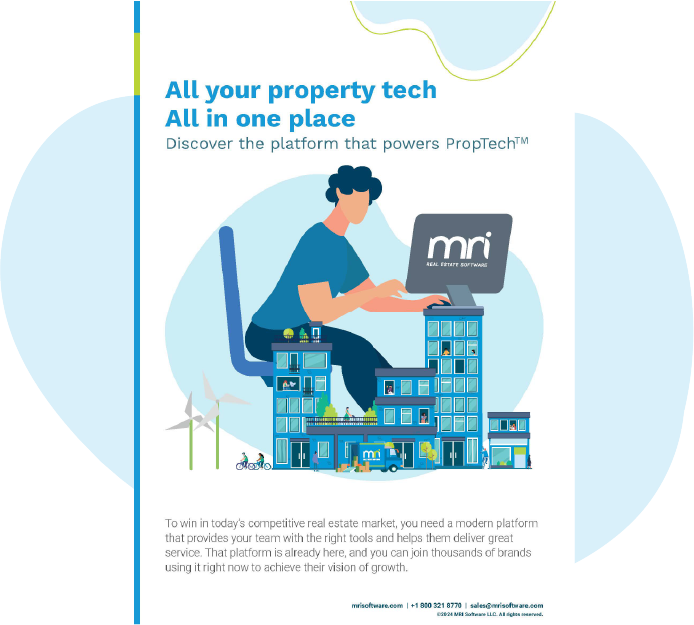How to prepare for the end of the real estate market cycle
The real estate cycle is the biggest driver of investment activity, and if historical precedent and expert opinions are any indication, then we may be reaching the end and eventual restart of the cycle within the next few years.
This potential downturn, however scary (or opportunistic!) it might be to investors, is an inevitable part of the real estate life cycle. Nothing can keep it from affecting your business, but there are ways to be prepared for it and make your organization as battle-ready as possible when it does arrive.
What is the real estate cycle?
The real estate cycle is made up of four separate stages that the real estate industry consistently goes through:
- Recovery: New construction is nonexistent, demand grows to absorb the large supply, and interest rates go down. Interest rates typically decrease, and real estate starts appreciating.
- Expansion: Rental income grows, leading to more demand than supply. Construction begins again when growth reaches a certain level and more construction projects are soon approved. The value of real estate may grow to market value and even beyond. However, this starts to create a bubble.
- Hyper Supply: Construction outpaces demand, rental growth slows as fewer renters are willing to pay premium rents, and real estate values trend downward.
- Recession: Interest rates go up and liquidity becomes nonexistent. Real estate values drop, leading to bargain prices. In addition to this, private equity funds start buying real estate, and technological innovations help in getting the next stage underway.
How long is the real estate cycle?
Over the last 100 years, peaks in land value and construction activity have occurred roughly every 18 years, creating a regular cycle of real estate “crashes.” Exceptions to this rule occur when irregular factors speed things up – such as the banking crisis in 2008 that forced lending standards to tighten rapidly. Typically, it takes the market anywhere between five to eight years to recover from a crash. Real estate investors, however, don’t have time to wait for the market to recover; some go completely bankrupt and never get back on their feet.
Where are we in the real estate cycle?
There have been several signs of a decrease in growth for the U.S. economy, which implies that we may be nearing the end of the expansion phase. If that’s the case, then is it possible we might be moving toward the hyper supply phase or even a recession? And when can we expect to see a shift? There are no definitive answers, but a survey in The Wall Street Journal examines those questions.
According to the survey, 59% of private-sector economists surveyed say the economy is likely to stop expanding in 2020, while 22% said that a slowdown in growth might be seen in 2021. A smaller portion of respondents said that a recession could begin as early as 2019, 2022, or a later, unspecified date. Out of the economists surveyed, 62% believe the recession will most likely be caused by the Federal Reserve’s reigning in of the economy. However, around 5% believe the recession will be caused by other factors such as disruptions to national trade or an unspecified bubble burst.
Is there anything that can be done to mitigate risk?
While the thought of an upcoming recession may frighten some and even bring on bad memories from the 2008 financial crisis, there are ways for investors to prepare themselves now for what lies ahead.
- Put forecasting disciplines in place. Use market assumptions and benchmarks to find the middle of the road and keep track of your portfolio’s standing in the market.
- Use predictive analytics to identify trends and patterns in the marketplace based on historical data.
- Utilize debt management. Do you finance your projects with debt, or do you pay with cash? Use debt to maximize returns and performance without exposing you to risk as the market and interest rates change.
- Take full advantage of strategic planning. Conduct this planning across all levels of your business – asset, portfolio, fund, and the corporate level. In addition, consider exploring strategic partnerships and joint ventures.
By taking these actions now, you can potentially minimize the impact on your portfolio if future financial turbulence should arrive.
How technology can help real estate investors prepare
Taking these cautionary steps can help mitigate risk, but it’s crucial that you implement the proper technologies that can help you take these steps the right way.
- Fund Modeling. This tool can help you blend historical financial information with forecasted consolidations and fund-level activities to run “what if” scenarios and produce forecasted performance metrics such as returns and yields. The powerful and flexible calculation logic combined with strict data integrity can help you get a better look at how your portfolio might fare in a recession.
- Asset Modeling. Optimize property performance with calculated insights at the property level. Perform lease-level sensitivity analyses and forecast and value your assets. Produce reports for a board or trust using an executive-level standard report library, and view reports by property type, country, region, sub-region and MSA.
- Debt Management. Investors can streamline the management of debt payments, store documents and lender/borrower information, automate the creation of journal entries, and produce in-depth debt reports. Debt Management is a great tool for investors looking to mitigate risk as we reach the end of the real estate cycle.
To learn more about how investors can prepare for the end of the real estate cycle, explore MRI Software’s investment solutions.
MRI Property Management – All your property tech, all in one place
To win in today’s competitive real estate market, you need modern property management software that provides your team with the right tools and helps them deliver great service. You simply can’t afford to restrain your team and your vision with…
